To a first-time viewer, the Tour de France can be a minefield. The winner is not simply decided by which rider crosses the finish line first in Paris.
How can a rider win multiple stages and not wear the yellow jersey? What is that polka dot jersey about? And what's with all the jargon they use?
Here’s our full guide to how the Tour de France is won: the classifications, the jerseys and the previous winners.
Tour de France classifications explained – what do the different jersey colours mean?

The Tour de France consists of four classifications that individual riders can win. The different classifications are signified by coloured cycling jerseys:
- The general classification (GC) – yellow jersey
- Mountains classification – polka dot jersey
- Points classification – green jersey
- Young rider classification – white jersey
The leader of each classification at the end of each stage wears the jersey on the following day.
If they continue to lead, they continue to wear the jersey until someone knocks them from the top of the classification. The leader of the classification at the end of the race is the overall winner of that particular classification.
There is also a team classification, but no coloured jersey is awarded for this.
What is the Tour de France general classification (GC)?

The general classification is the oldest and most coveted classification in the Tour de France, and is led by the rider with the shortest cumulative time.
Each rider’s time is recorded on every stage and the GC ranks the entire field. The leader of the general classification after the final stage in Paris is the overall winner of the Tour de France.
Tour de France yellow jersey explained
The GC comes with the coveted yellow jersey – or maillot jaune in French – which is worn by the leader of the classification until their overall cumulative time is bettered by another rider at the end of a stage.
The yellow jersey then passes on to the new leader of the GC, and so on.
Previous Tour de France winners
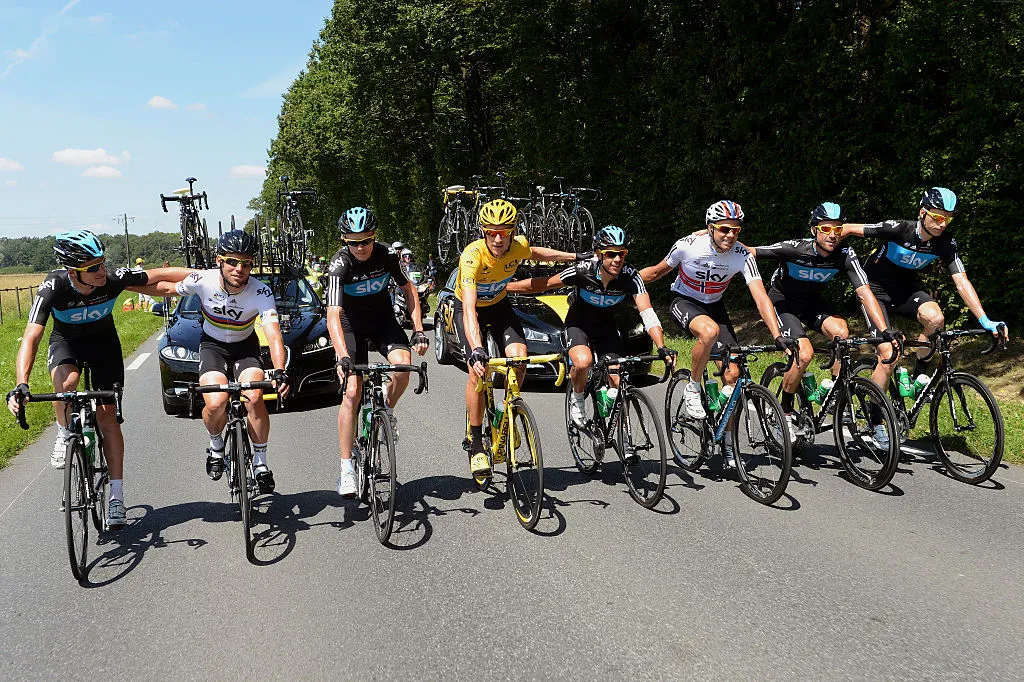
Jonas Vingegaard (Team Jumbo-Visma) won his first Tour de France in 2022, beating Tadej Pogačar (Team UAE Emirates), winner of the previous two editions of the Tour de France.
Egan Bernal's success in 2019 marked Team Ineos-Grenadiers' (formerly Team Sky) seventh Tour de France title in eight years.
Geraint Thomas won in 2018 and Chris Froome claimed four editions before that, after Bradley Wiggins had set the ball rolling in 2012.
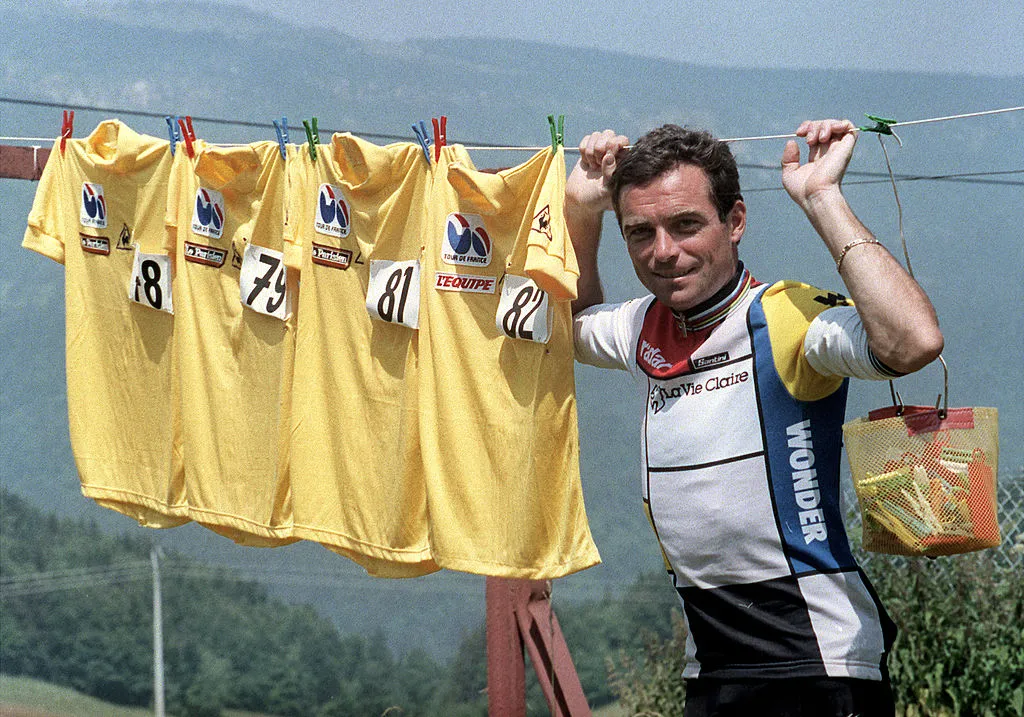
Since the beginning of the Tour, four riders have won the general classification five times: Jacques Anquetil, Eddy Merckx, Bernard Hinault and Miguel Indurain.
Meanwhile, Fabian Cancellara is the rider who has worn the yellow jersey for the most days without ever winning the Tour (29).
Julian Alaphilippe held the jersey for 14 days in 2019, but fell away in the general classification in the final few stages.
Tour de France mountains classification
What is the mountains classification?
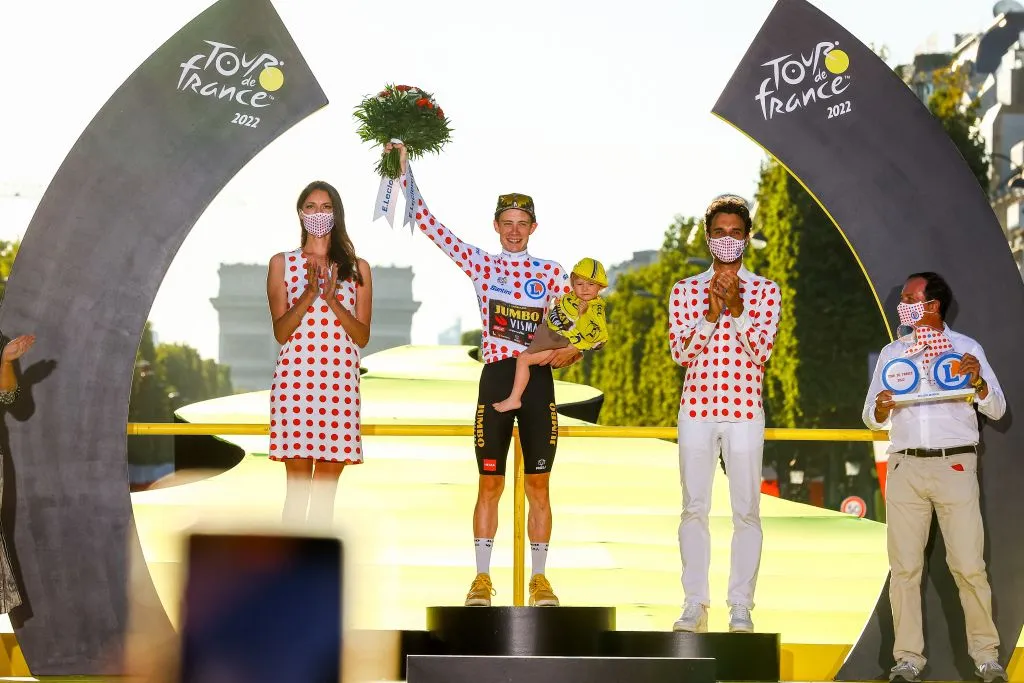
The mountains classification was introduced in 1933 as a secondary competition within the Tour de France.
The first riders to reach the top of categorised climbs in the Tour are awarded a certain number of points according to their position across the summit.
The climbs are categorised by a number, from 1 (difficult) to 4 (least difficult) based on factors such as the climb’s length and gradient.
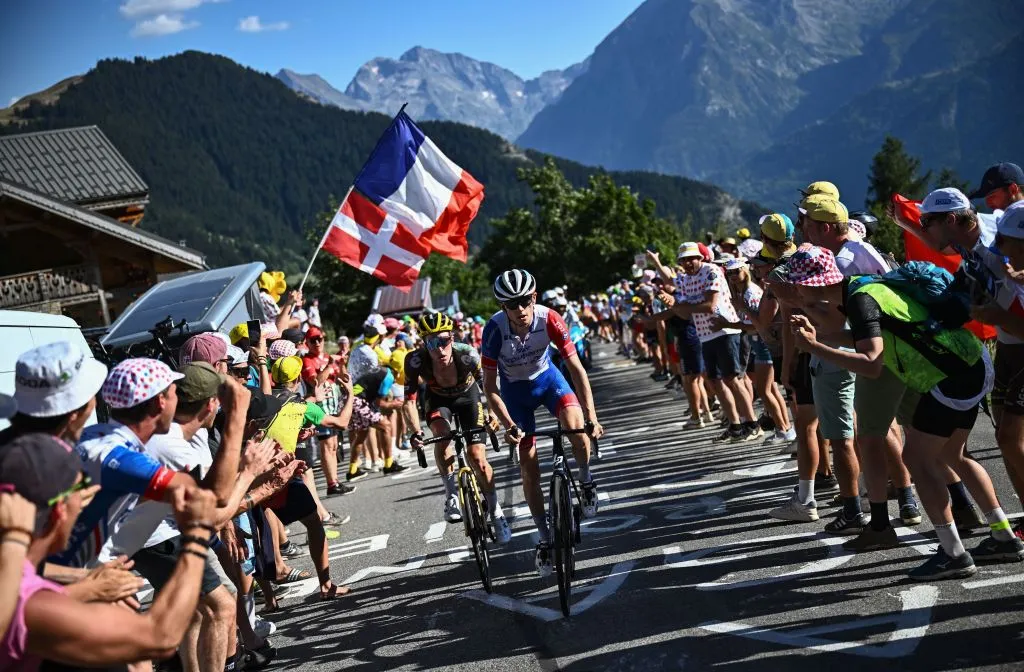
Climbs that are more difficult than category 1 are called hors catégorie – "a class of their own" in French.
Hors catégorie climbs carry the most points. Summit finishes – stages that finish atop a climb – and category 1 climbs are the next most lucrative followed by category 2 and so on.
The first rider to reach the Col de la Loze, the highest peak of the 2023 Tour de France, on stage 17 will earn double points.
The rider with the highest cumulative points total leads the mountains classification and wears the polka dot jersey. The exception is if they are also leading another classification, such as the general. In that case, the second rider in the rankings wears the jersey.
At the end of the Tour, the overall winner of the classification is the King of the Mountains.
Tour de France polka dot jersey explained
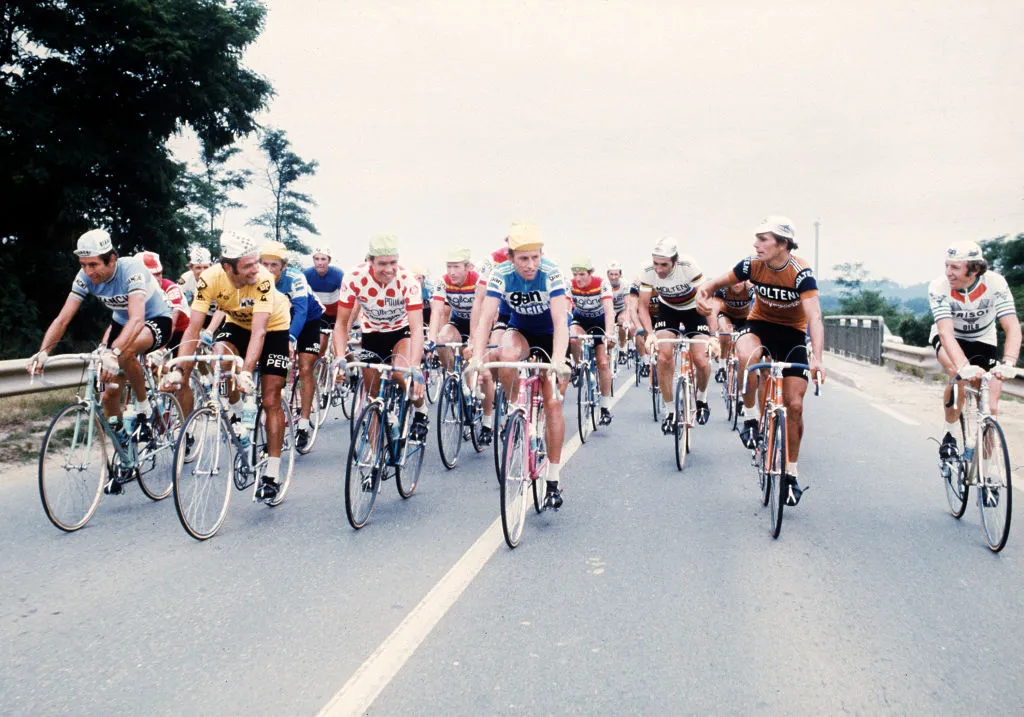
The mountains classification is signified by a white jersey with red polka dots (known as the polka dot jersey or maillot à pois).
Vicente Trueba was the first winner of the King of the Mountains competition in 1933. The polka dot design wasn't introduced until 1975 when Bernard Thévenet won the classification.
Previous Tour de France mountains classification winners
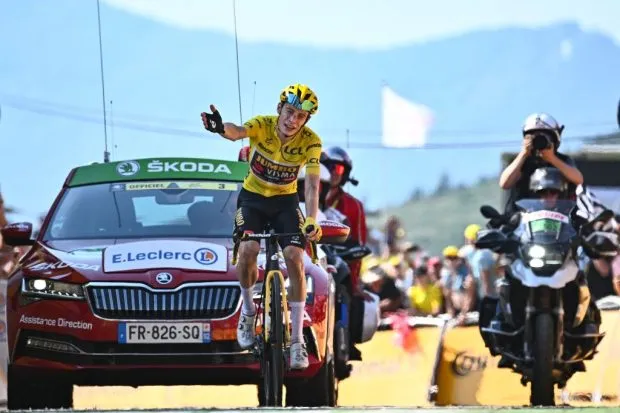
Jonas Vingegaard added the King of the Mountains jersey to his maillot jaune in 2022.
Tadej Pogačar took the mountains classification in 2021 and 2020, following Romain Bardet in 2019 and Julian Alaphilippe in 2018.
Another Frenchman, Richard Virenque, won the title seven times in his career between 1994 and 2004, while both Federico Bahamontes and Lucien Van Impe have won it six times, from 1954 to 1964 and 1971 to 1983 respectively.
Eight cyclists have now won the mountains classification and general classification in the same year:
- Gino Bartali
- Sylvère Maes
- Fausto Coppi
- Federico Bahamontes
- Eddy Merckx
- Carlos Sastre
- Chris Froome
Pogačar, Bartali, Coppi and Merckx have all done it twice.
Tour de France points classification
What is the points classification?
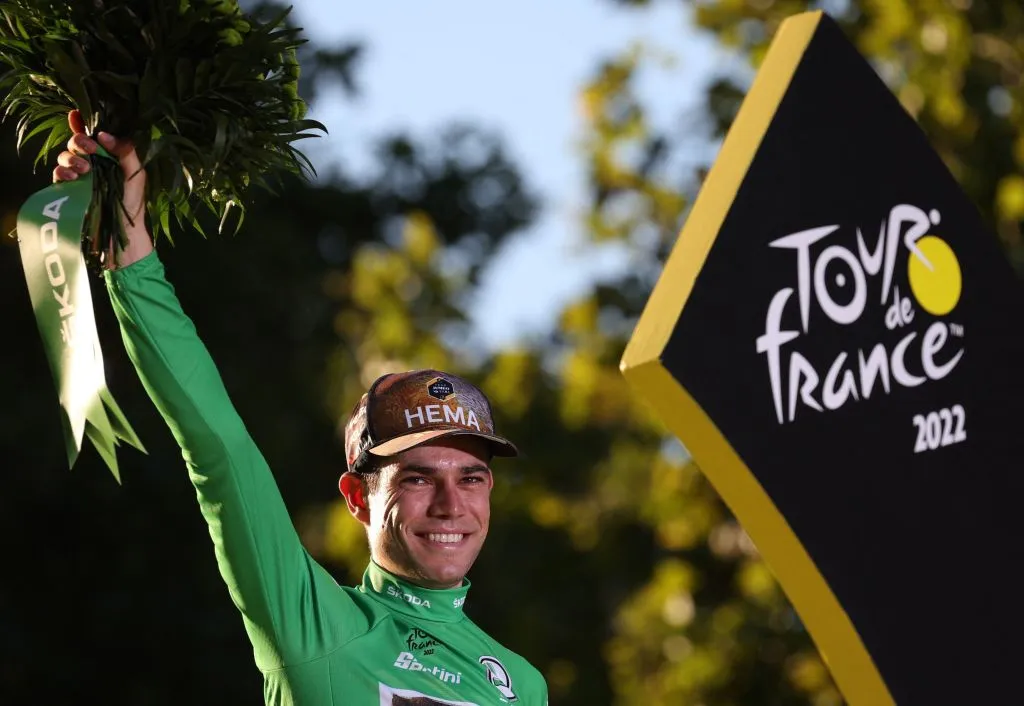
The points classification was introduced in 1953 as an incentive for sprinters, with Fritz Schär being the first rider to win it.
The first 15 riders to complete each stage are awarded points, with the most points going to the first rider and the following 14 receiving successively fewer points.
More points are on offer for flat stages, again as an incentive to the sprinters. Riders can also gain points by winning intermediate sprints (sprints that take place at designated points part-way through a stage).
Tour de France green jersey explained
The leader of the points classification is indicated by a green jersey (maillot vert). Green matched the logo of the first jersey sponsor, La Belle Jardinière clothing store.
The overall prize is awarded to the rider with the most points at the end of the Tour.
Previous Tour de France points classification winners
The green jersey went to Wout van Aert in 2022 and Mark Cavendish in 2021.
In previous years the award had become synonymous with one man: Slovakian superstar Peter Sagan. He claimed the prize for a record-breaking seventh time in 2019.
Tour de France young rider classification
What is the young rider classification?
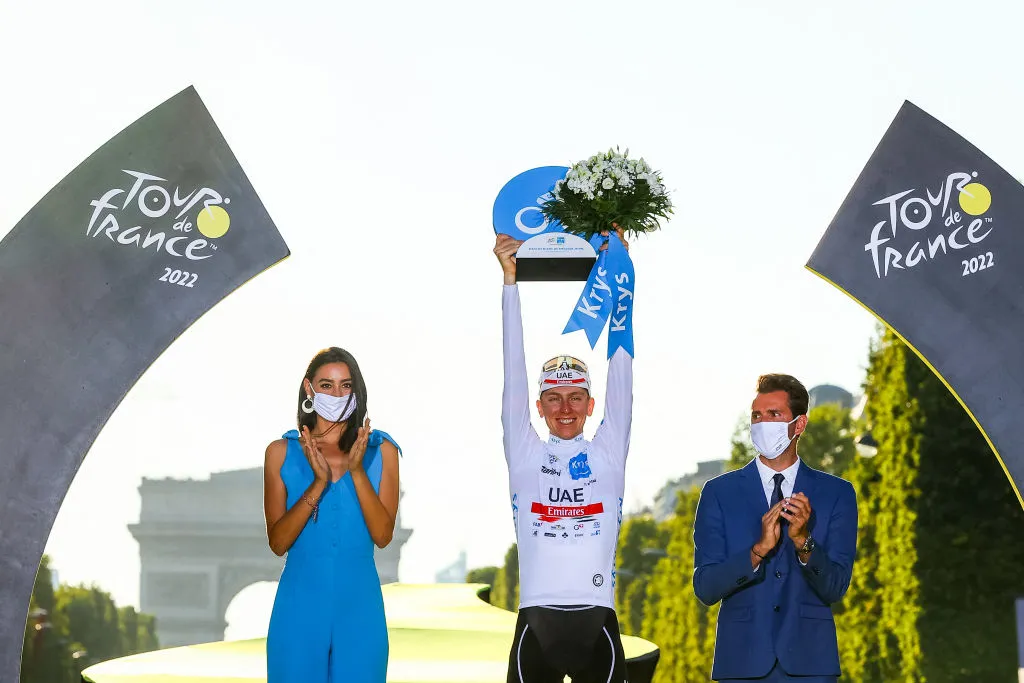
The young rider classification was introduced to the Tour in 1975. Classics great Francesco Moser was its first winner.
This year it applies only to cyclists born on or after January 1, 1998 (under the age of 26).
Just like the general classification, it’s calculated using each rider's cumulative overall time but is aimed at rewarding young riders in the early stages of their careers.
Tour de France white jersey explained
The youth classification is signified by a white jersey, and much in the same way as the other categories, the rider currently topping the classification wears it until someone else overtakes their lead.
Previous Tour de France young rider classification winners

Beaten into second in the GC, Tadej Pogačar was still the fastest young rider in 2022.
The Slovenian had become the sixth man to win both the white and yellow jersey in the same year when he rode to victory at the 2020 Tour de France, joining Egan Bernal (2019), Laurent Fignon (1983), Jan Ullrich (1997), Alberto Contador (2007) and Andy Schleck (2010). He then repeated the feat in 2021.
Pierre Latour won the young rider classification in 2018, while British twins Adam and Simon Yates were triumphant in the previous two years.
What is the Tour de France team classification?
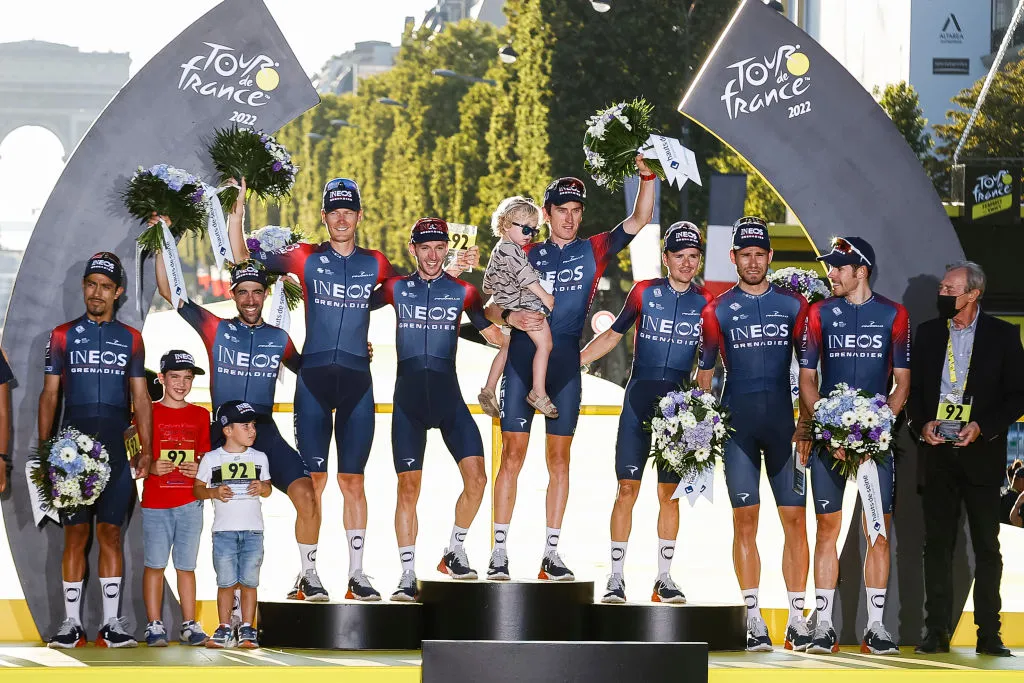
The team classification has been part of the Tour de France since 1930 but awards no coloured jersey. Instead, the team is given race numbers with a yellow background, rather than white.
It’s not considered to be as important as the individual classifications. Teams don’t normally set out with an ambition to win it. But they may change their tactics during the race if they are in a good position to do so.
The team classification takes the time of each squad's top three finishers on every stage. The team with the lowest cumulative time leads the classification.
Previous Tour de France team classification winners
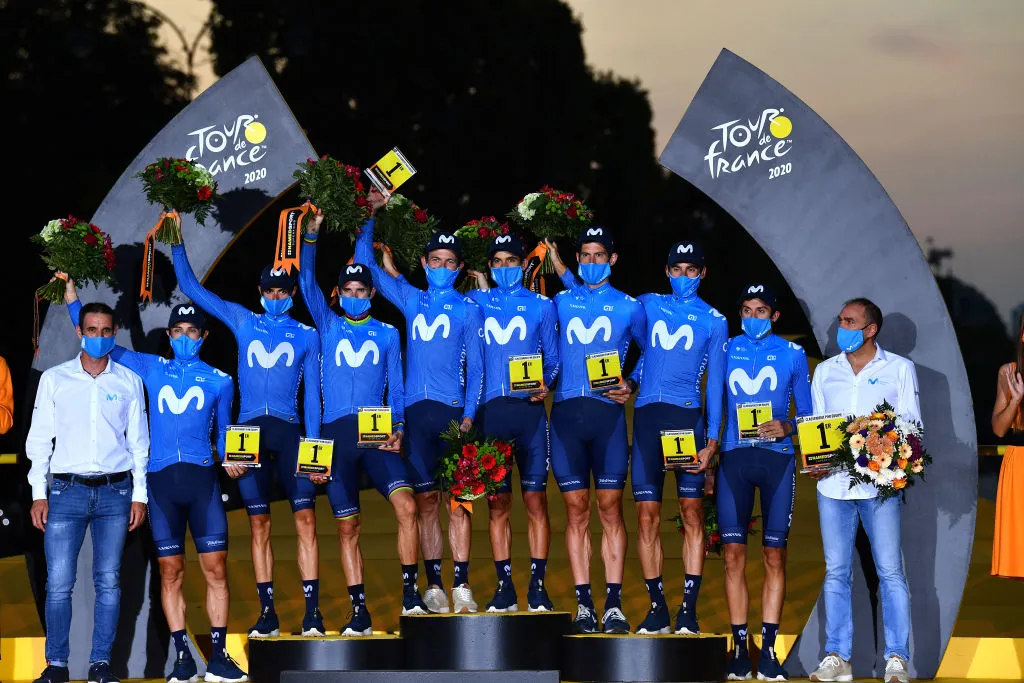
Movistar Team has dominated the classification in recent years, topping the team rankings in 2015, 2016, 2018, 2019 and 2020. This is despite none of its riders winning the Tour in those years.
Generally, the team with the rider leading the Tour will be more inclined to sacrifice teammates to protect the individual's lead, making winning both the individual and team classification – as Team Sky did in 2017 – a rare feat.
